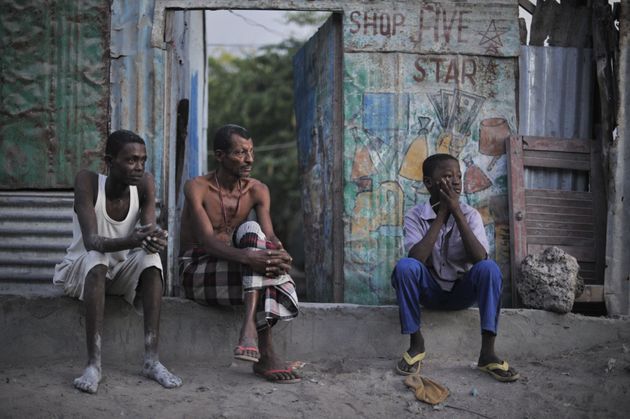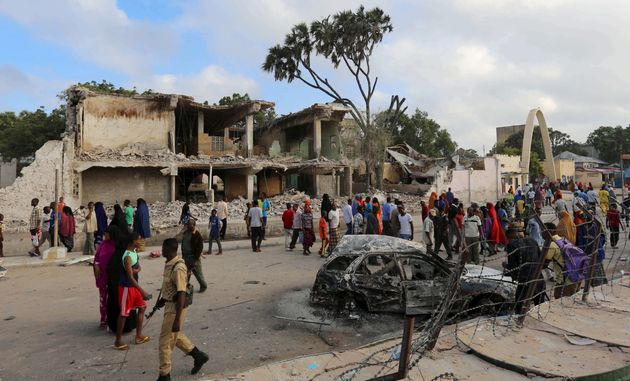
Every week, The WorldPost asks an expert to shed light on a topic driving headlines around the world. This week, we speak with analyst Cedric Barnes about the international fight against the Somali Islamist militant group al Shabab.
After a quarter-century of anarchy and war, Somalia is inching forward with a political process meant to set the African nation on the path to stability.
Somali President Hassan Sheikh Mohamud pledged to hold elections, finalize the constitution and determine the number and location of Somalia’s federal states by 2016. Fierce political wrangling has accompanied each of these processes, and the election is now set to be decided by clan elders and regional representatives rather than by a popular vote.
Yet it is a significant moment for the country, 25 years after feuding warlords exploited a power vacuum left by the fall of military dictator Siad Barre.
Still, one group that emerged from the chaos, the al Qaeda-affiliated al Shabab, is determined to disrupt Somalia’s political transition.
While the African Union force in Somalia, AMISOM, has been pushing al Shabab from its significant territorial strongholds since 2011, the militant group has redoubled attacks in recent months, terrorizing the capital with suicide bombings, ambushing AMISOM bases and recapturing cities in southern Somalia.
At the same time, U.S. forces have intensified the military campaign against the group in Somalia, killing a regional intelligence head of al Shabab in a strike last week. Last month, the U.S. targeted the group in a deadly commando raid and bombed a training camp which the Pentagon said left 150 fighters dead.
The WorldPost spoke to Cedric Barnes, the Horn of Africa project director for International Crisis Group, about the U.S. campaign against al Shabab and the critical months ahead for Somalia.

TOBIN JONES/AFP/Getty Images A father and his two sons watch a security operation in Mogadishu in 2013. Somalia will hold elections, but not by popular vote, later this year.
What’s behind the latest U.S. strikes on al Shabab?
I imagine it was a combination of reasons — partly operational, if perhaps opportunities arose based on intelligence on plans or threats, and partly due to the need to do something to stop al Shabab’s recent run of successes that was rather undermining AMISOM’s role and the whole project for stabilizing Somalia, which the international community has invested so much in.
After AMISOM pushed al Shabab out of the large parts of Somalia it controlled after 2011, there was no real stabilization plan, and that left a vacuum of sorts. Al Shabab, which was already quite a resilient organization, had time to recover. There have been a series of attacks on AMISOM bases in the last 12 months, and each one has increased in terms of ambition, the bounty they captured and the damage done against AMISOM’s reputation.
As well as these more conventional insurgent attacks, al Shabab has also engaged in a constant war of attrition, especially in urban areas, which shows that al Shabab is still present and can penetrate right to the heart of areas seen as secure, such as Somali government offices.
Somali and international officials may have declared that al Shabab had been defeated, a claim repeated by journalists, but that appears very much hollow and premature.
Q: How effective are U.S. strikes at rolling back al Shabab’s successes?
They are effective, but only if they are followed up by meaningful political progress. That depends on greater consensus within the Somali political establishment, between Somalia’s neighbors and allies, and international donors and supporters. At the moment, that isn’t really there. People are working at cross-purposes. There is a lot of competition over the prize of Somalia at the moment, in terms of what the dividends could bring.
Q: Has killing al Shabab’s leaders affected the group? It seemed like the U.S. strike in March departed from that strategy by apparently killing dozens of rank-and-file militants.
The attack on the training camp was unusual, particularly for the U.S., although the Kenyan military says it conducts strikes like that fairly often. The recent strike on [al Shabab official] Hassan Ali Dhoore was in the same area, and in the last week, we’ve had claims of victory over al Shabab in the area. So it does appear to be more of a military strategy, coordinating with what AMISOM is doing in that part of Somalia.
That attack seems to be slightly separate from the program of assassinations of particular leaders, most of whom appear to be people directly associated with al Shabab’s external activities. So this is not just about the war inside Somalia, but the wider counterterrorism war in East Africa.
The assassinations must have had an impact on al Shabab to a certain extent, but they don’t appear to have a great deal of long-term impact on group. There are so many well-trained and ambitious individuals that they tend to fill the shoes of people who have been taken out. For a month or so after an assassination, you hear a lot of chatter about how al Shabab is split by infighting, but generally it seems to settle down quite quickly.
This is not just about the war inside Somalia, but the wider counterterrorism war in East Africa.
In fact, the most potent threat to al Shabab recently has been from the Islamic State. Groups were potentially about to declare allegiance to the Islamic State in four different areas of Somalia. That really does seem to have rattled al Shabab. The group mobilized a lot of its forces to eliminate this internal threat extremely effectively. We still think there are elements who are still loyal to the Islamic State, but they’re keeping very quiet now.
Q: What is the rationale for the U.S. strikes? Does al Shabab pose a threat to the international community outside of Somalia?
It’s not so much about defending the international community, but defending the international community’s support for the political project for Somalia, and especially the next stage — the transfer of political office later this year.
It’s hard to say just how much of a threat al Shabab poses externally. Over the last two to three years, al Shabab refocused its attention on Somalia, on its own internal security, and to a certain extent, on bringing this fight to neighboring states, especially Kenya. They’ll always take the opportunity to attack international interests, but how far afield they attempt to do that is a different matter.
Q: This is a big year for Somalia’s political transition. Does that pose a challenge for the security situation?
The international community don’t want the election to be a repeat of 2012 — a very abstract, clan-based selection process that’s done largely in Mogadishu. They want to bring it out into the hinterland. So they want to secure areas where there could be clan-based electoral colleges to try and make an indirect election slightly more direct.
I don’t think the process itself is a risk to stability. I think the elite will more or less buy into the elections. It’s what happens afterwards that’s more unpredictable.
You are not likely to have a central government that is more competent than the current one. There is still a lack of functioning institutions — there’s no coherent legal code, for example. The greatest short- to medium-term problem is the quite hurried process of the establishment of the interim federal states. If there are clans who are perceived to have lost out in the federal state formation process, if they ally themselves with al Shabab in order to defend their influence and autonomy, that could be a problem.
Q: Is al Shabab going to try and disrupt the political transition?
Yes, that will be its main objective. The process is already pretty stretched and does not have the greatest amount of legitimacy. Al Shabab is going to apply a lot of pressure, especially outside of Mogadishu, to stop any kind of representative process.
Q: How is al Shabab still such a disruptive force after all the years and billions of dollars spent trying to stop it? Where does the militant group get money and recruits?
There’s a huge amount of unemployed youth in Somalia. There are two generations of Somalis who have never really enjoyed stability. Al Shabab is also recruiting an awful lot from East African countries like Kenya, Ethiopia, Tanzania — a fact that has been severely underestimated until recently. The group always had a link with with al Qaeda in the Arabian Peninsula, based in Yemen, and that’s also been an underestimated conduit of people and expertise and money.
The most potent threat to al Shabab recently has been from the Islamic State.
There’s also plenty of money for the group within Somalia itself. They can tax directly in the areas they control. They do still control quite a lot of the rural areas, so even though the markets are controlled by AMISOM, people have to move out of al Shabab areas to reach the market. There’s also an informal means of taxation, which can either be voluntary or extracted with threats from the business community, especially in Mogadishu.
Much as people hate to admit it, there is some sympathy for what al Shabab is doing. In a local area, al Shabab can say it’s defending minority clans against domination by majorities. There might be sympathy that al Shabab is defending Somalia against the interference of neighboring countries and the international community. And people might have genuine sympathy that al Shabab is one way to establish an Islamic order which, in the absence of any credible alternative in Somalia, some people still believe in.
This interview has been edited and condensed for clarity.


